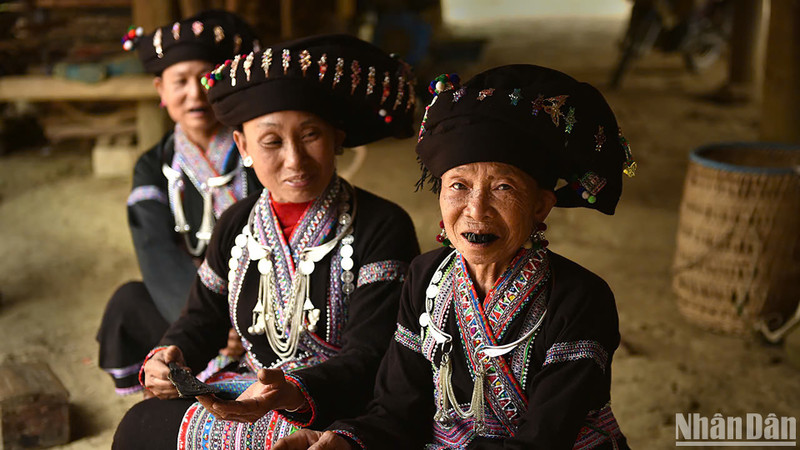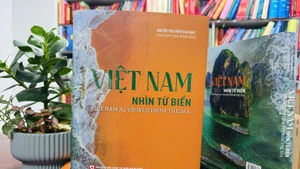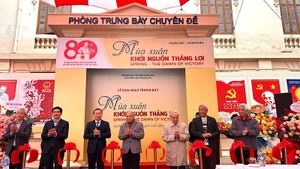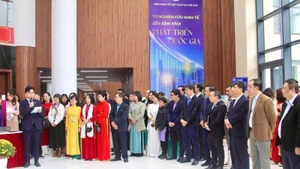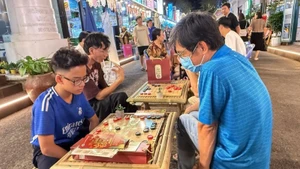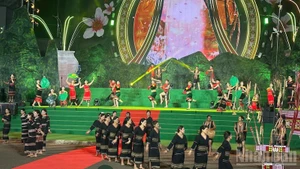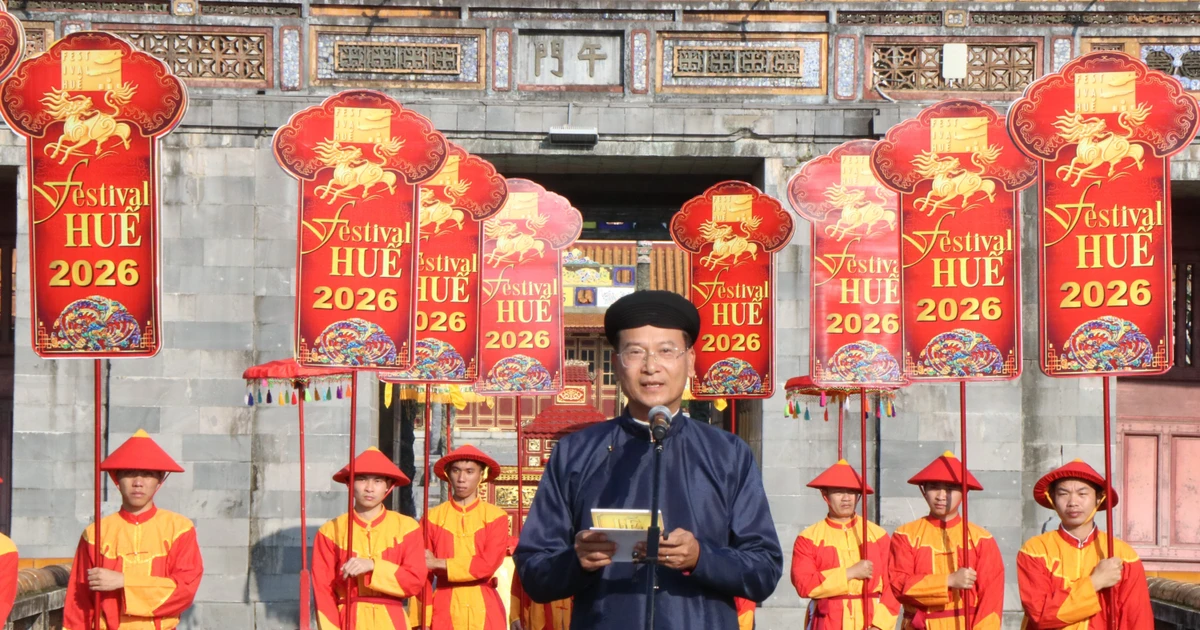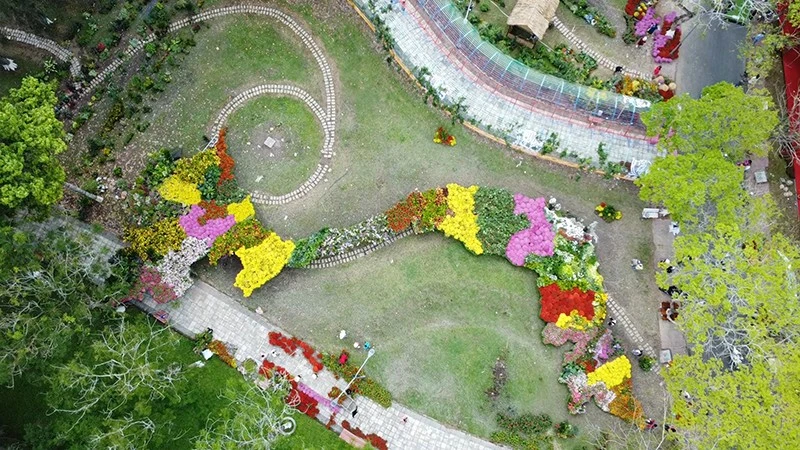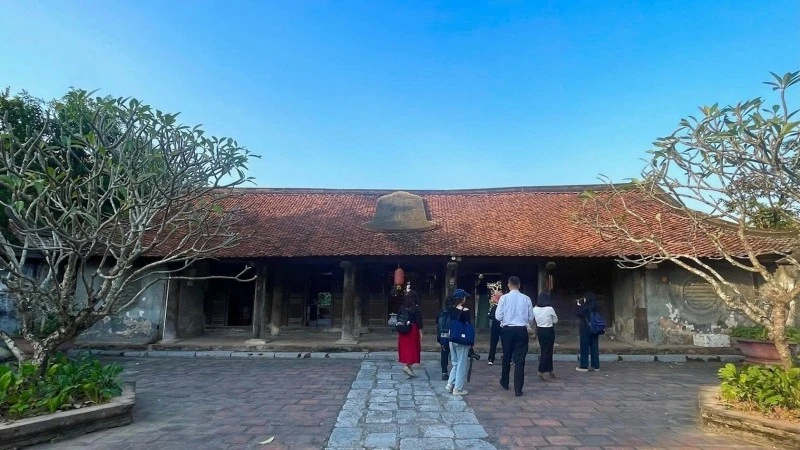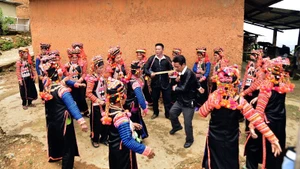The main ingredient used to blacken teeth comes from a forest tree found in high mountainous areas, known for its sturdy trunk and resin-rich wood. After being harvested, the wood is sun-dried for gradual use.
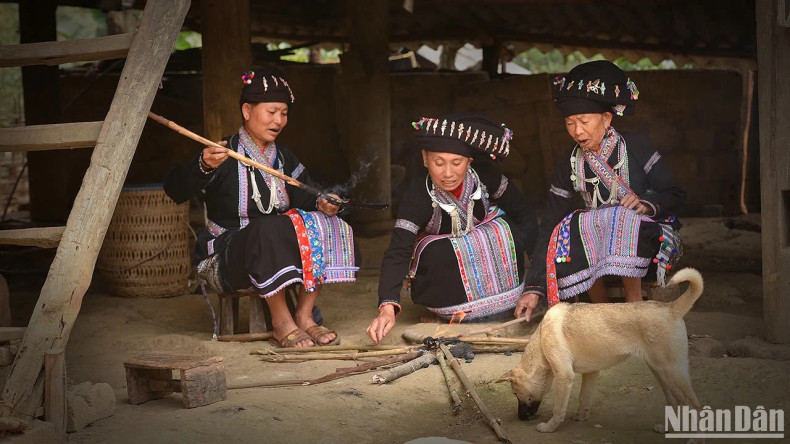 |
| Burning the wood to obtain the blackening material. |
To prepare for the blackening process, the woman burns a piece of wood and captures the black smoke residue on a metal surface such as a piece of iron or a knife blade. She then uses her index finger to collect the soot and rubs it onto her teeth.
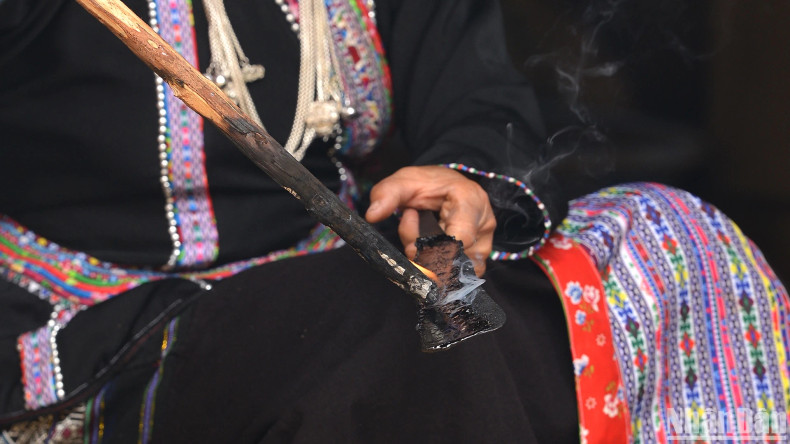 |
| Preparing the material used for teeth blackening. |
According to Lao ethnic women, a set of black teeth is not only a traditional standard of beauty but also a symbol of good fortune. As recounted by middle-aged women in the village, the custom was traditionally observed once a woman reached her thirties.
In earlier times, some elders began blackening their teeth from the age of 13. During the blackening period, individuals had to avoid hot and hard foods to maintain the shiny and long-lasting black appearance.
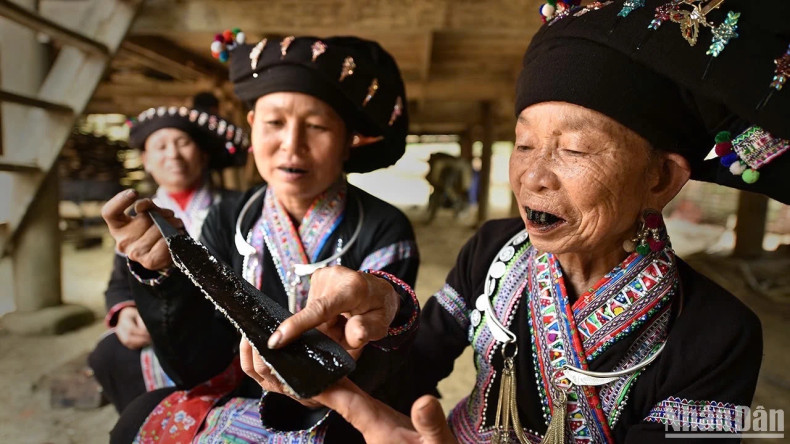 |
| The main material used in the process is charcoal made from burnt forest wood. |
As modern beauty ideals have changed, the practice of teeth blackening is no longer widespread among younger generations. However, in Lao ethnic group's villages in Tam Duong, many middle-aged and elderly women still maintain and take pride in their blackened teeth. These mothers and grandmothers also serve as cultural conduits, helping the younger generation understand and appreciate the customs of their ethnic heritage.
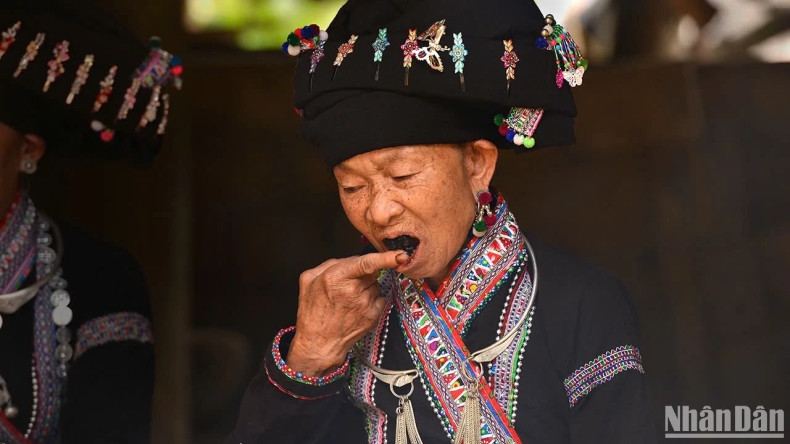 |
| Lao ethnic women applying the blackening material themselves. |
Recognising the deep cultural significance and uniqueness of this tradition, local authorities and cultural departments in Lai Châu have launched various initiatives to preserve and promote this cultural practice to tourists and the wider community.
During ethnic cultural festivals, demonstrations of the teeth blackening process are held alongside traditional handicraft and culinary experiences. These activities are organised annually to bring the vibrant colours of local culture closer to both residents and visitors.
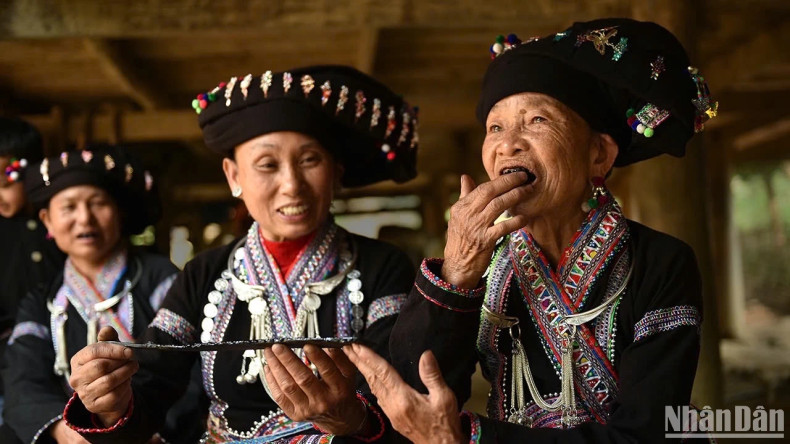 |
| Due to modern aesthetic preferences, only middle-aged women continue the practice. |
From the perspective of tourism development aligned with cultural preservation, the blackened teeth tradition can serve as a distinctive highlight within Lai Châu’s cultural tourism offerings.
Lao ethnic villages, with their beautiful customs, traditional architecture, and unspoiled way of life, represent invaluable resources for developing community-based tourism that preserves heritage. Incorporating authentic cultural practices into experiential tourism models not only creates livelihoods for locals but also showcases the unique identity of the Lao people.
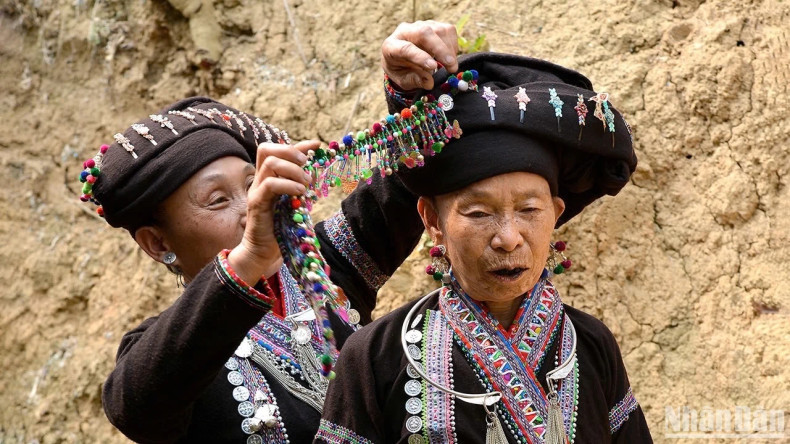 |
| The blackened teeth tradition stems from the aesthetic ideals of Lao people. |
For the Lao community in Tam Duong, blackened teeth are more than just a tradition—they are a symbol of cultural identity.
In today’s era of global integration, preserving traditions such as this is a meaningful way to affirm cultural identity and ensure the continuity of ethnic heritage across generations.
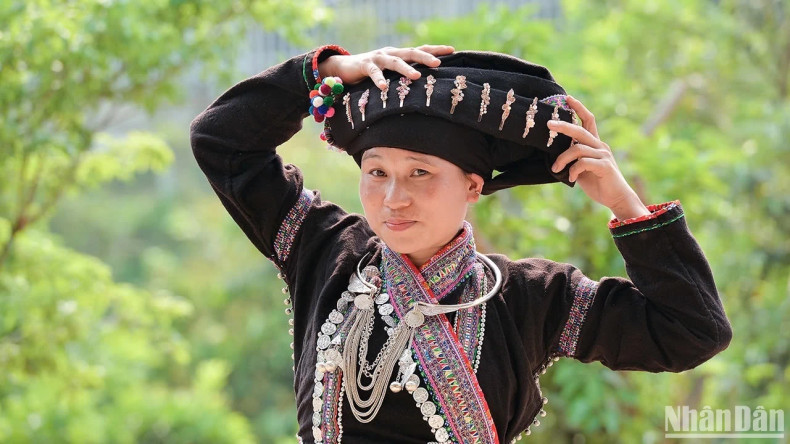 |
| Lao ethnic women in traditional attire. |
Preserving the blackened teeth tradition is not merely about maintaining an old custom—it is also about honouring the distinctive beauty of the Lao ethnic people in Viet Nam’s north-western mountains, serving as vivid testimony to the rich cultural diversity of the country’s ethnic communities.
